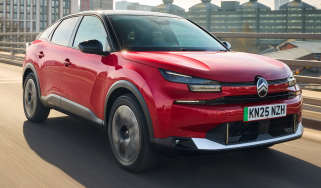Volkswagen Golf GTI MkVII vs Volkswagen Golf GTI MkII
We review two versions of the Volkswagen Golf GTI, with decades separating each model

| Specs | VolkswagenGolf GTI MkVII | VolkswagenGolf GTI MkII |
| Price new | £25,845 | (1988) £10,548 |
| Engine | 2.0-litre 4cyl | 1.8-litre 4cyl |
| Power | 217bhp | 112bhp |
| 0-60mph | 6.5 seconds | 8.3 seconds |
| Top speed | 152mph | 119mph |
Over the past 25 years, Auto Express has dedicated more column inches to the VW Golf GTI than any other hot hatch. Since the model appeared in the UK in 1976, it’s enjoyed a passionate following among British performance car enthusiasts. Having survived a serious dip in form during the early noughties, when VW put the badge on just about anything with alloys, the GTI still remains the benchmark by which all others are judged.
The latest MkVII distils nearly four decades of heritage and engineering adventure into one ultra-desirable package. Its exterior design blends modern lines with just enough retro features to forge a link with the past, while the drivetrain showcases the talents of VW’s engineering boffins.
In true GTI fashion, the MkVII is wonderfully easy to live with. As we’ve come to expect from Volkswagen hot hatches over the decades, it has no rough edges or wayward handling traits, and there is no need to spin the engine up to 8,000rpm to find the power.
As with a bespoke suit, the GTI fits perfectly in all areas, cleverly covering any imperfections. The engine is the star of the show. With 217bhp and 350Nm of torque, it gives brutal yet controllable performance all through the revs. A smooth, linear delivery and broad powerband mean muscle is virtually instantaneous, regardless of gear and speed.
Used - available now
The chassis is equally impressive, and just firm enough to keep the body level and planted at speed. Multi-link suspension at the rear delivers superb cornering balance and allows for quick changes of direction. With precise steering and hugely powerful brakes completing the dynamic package, the MkVII strikes a marvellous balance between sportiness and refinement.
Volkswagen's ability to create a hot hatch with mass appeal is, of course, nothing new. The MkI set a template for easy-t0-access performance and agile handling that’s been handed down through the generations. In 1988, one of the best GTIs of all was wowing buyers with its performance, comfort and quality. Revered by hot hatch fans, the MkII hit a sweet spot in VW’s design and engineering development cycle. Handsome, solid and powerful, it still delights and entertains today.
Eagle-eyed fans will spot that we’ve used a 1991 GTI with later ‘big bumper’ styling, but the rest of our car is virtually identical to the machine that was flying out of showrooms in 1988. We’ve opted for the classic eight-valve version, rather then the more expensive 16-valver. Its 112bhp may seem modest now that hot hatches develop 200bhp, but the MkII has easily enough performance to keep things interesting.
The balance of controls is perfect, with the steering, shift and throttle perfectly weighted. As with all great performance cars, the MkII works with you, always ready to switch directions, with a generous slug of acceleration when the road straightens up.
The GTI’s interior design also presses all the right buttons. Its ergonomics lag behind today’s standards, but every element of the cabin has a stark yet efficient feel. Striking the perfect balance between cool German precision and sporting functionality, it’s aged extremely well over the decades.
So in many respects, the gap between the MkII and MkVII is small. Although four generations have passed between them, the design and engineering DNA that defines the classic MkII flows through every component of the current car.












